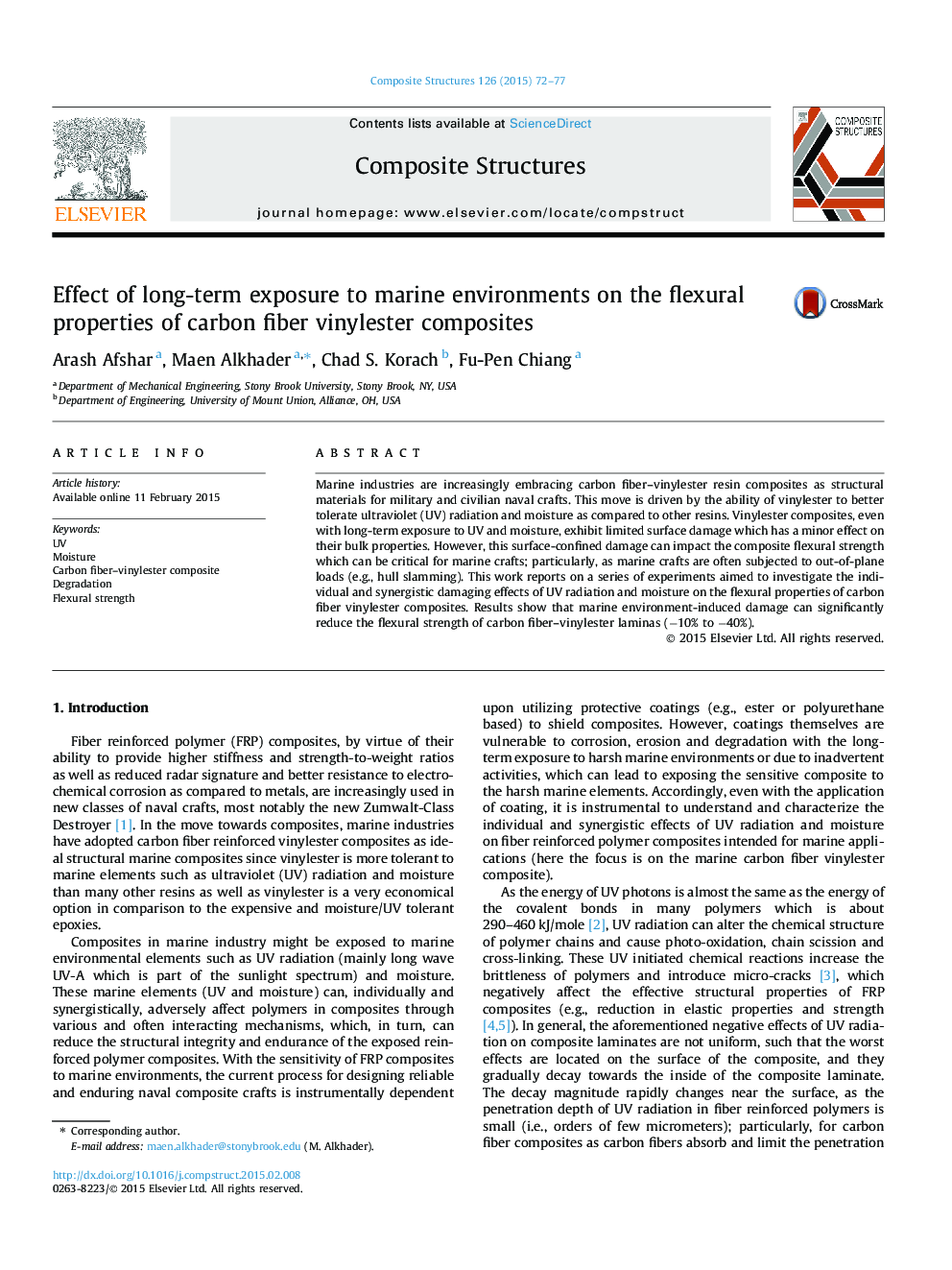| Article ID | Journal | Published Year | Pages | File Type |
|---|---|---|---|---|
| 251349 | Composite Structures | 2015 | 6 Pages |
Marine industries are increasingly embracing carbon fiber–vinylester resin composites as structural materials for military and civilian naval crafts. This move is driven by the ability of vinylester to better tolerate ultraviolet (UV) radiation and moisture as compared to other resins. Vinylester composites, even with long-term exposure to UV and moisture, exhibit limited surface damage which has a minor effect on their bulk properties. However, this surface-confined damage can impact the composite flexural strength which can be critical for marine crafts; particularly, as marine crafts are often subjected to out-of-plane loads (e.g., hull slamming). This work reports on a series of experiments aimed to investigate the individual and synergistic damaging effects of UV radiation and moisture on the flexural properties of carbon fiber vinylester composites. Results show that marine environment-induced damage can significantly reduce the flexural strength of carbon fiber–vinylester laminas (−10% to −40%).
